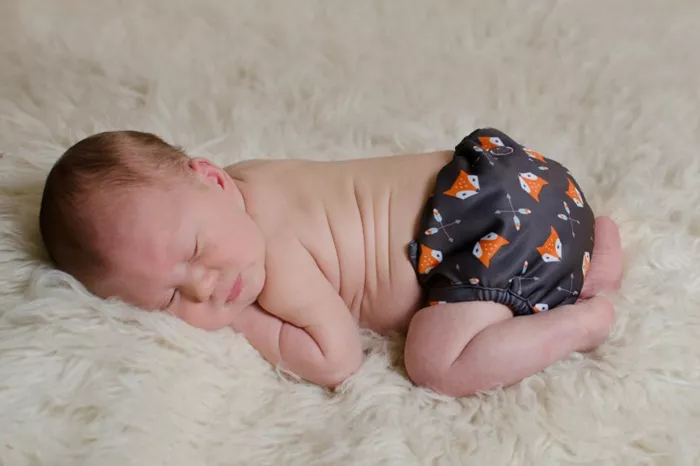When caring for a newborn, parents often encounter various decisions regarding their baby’s comfort and health. One common concern is whether diaper covers should extend over the belly button. This article provides an in-depth analysis of this topic, exploring the anatomy of the belly button, the types of diapers available, and the best practices for diapering a newborn.
Understanding the Anatomy of the Belly Button
What Is the Belly Button?
The belly button, or navel, is the scar left behind after the umbilical cord is cut at birth. It connects to the fetus through the umbilical cord, providing nutrients and oxygen during pregnancy. After birth, the umbilical cord is no longer needed, and it typically falls off within the first few weeks of life. The belly button can take on different shapes and appearances, depending on how it heals.
The Importance of the Belly Button Area
The belly button area is sensitive, especially in newborns. After the umbilical cord stump falls off, the skin around the belly button may still be healing. Keeping this area clean and dry is crucial for preventing infections and ensuring proper healing.
Types of Diapers Available
When choosing a diaper, parents have various options. Each type has its own benefits and considerations regarding coverage over the belly button.
Disposable Diapers
Disposable diapers are convenient and popular among new parents. They are designed for easy use and quick changes. Most disposable diapers have a stretchy waistband that allows for a snug fit without covering the belly button area excessively.
Benefits of Disposable Diapers
Convenience: Easy to change and dispose of.
Absorbency: Excellent moisture absorption, keeping the baby dry.
Variety: Available in various sizes and styles.
Considerations for Belly Button Coverage
When using disposable diapers, it is essential to ensure that the diaper fits properly around the belly button. A well-fitting diaper should provide coverage without being too tight or constricting.
Cloth Diapers
Cloth diapers are a reusable option for parents. They come in various styles, such as prefolds, fitteds, and pocket diapers. Cloth diapers can provide better breathability and comfort for some babies.
Benefits of Cloth Diapers
Eco-Friendly: Reusable, reducing waste.
Cost-Effective: Although the initial investment is higher, they save money over time.
Customizable Fit: Many cloth diapers have adjustable snaps or Velcro.
When Should Diapers Cover the Belly Button?
Diapering Newborns
For newborns, it is often recommended to leave the belly button area exposed. This practice allows for better air circulation and promotes healing after the umbilical cord stump falls off. Most diaper brands designed for newborns have a cut-out section or a design that accommodates the belly button.
After the Umbilical Cord Falls Off
Once the umbilical cord stump has fallen off and the area is healed, parents can begin to adjust the diaper coverage. At this stage, it is generally acceptable for the diaper to cover the belly button, as long as it does not cause discomfort or irritation.
Signs of Discomfort or Irritation
Parents should be vigilant for signs that the diaper is causing irritation. These signs may include:
Redness or Rashes: Look for any redness around the belly button area.
Fussiness: If the baby seems uncomfortable or fussy during diaper changes, it could indicate irritation.
Fluid or Discharge: Any fluid or discharge from the belly button area should be assessed by a healthcare professional.
Best Practices for Diapering Newborns
Keeping the Area Clean and Dry
Maintaining hygiene is critical for the belly button area. Parents should follow these best practices:
Gentle Cleaning: Use a clean, damp cloth to gently wipe the area around the belly button. Avoid using alcohol or harsh cleansers.
Air Drying: Allow the area to air dry before putting on a new diaper. This practice helps prevent moisture buildup, which can lead to infections.
Choosing the Right Diaper Size
Selecting the appropriate diaper size is crucial for comfort and coverage. Parents should:
Follow Size Guidelines: Refer to the manufacturer’s size chart, which typically considers the baby’s weight.
Check for Proper Fit: The diaper should fit snugly around the waist and legs without leaving marks on the skin.
Adjusting Diaper Fit
Adjusting the fit of the diaper is vital to ensure it does not cover the belly button too tightly. Parents should:
Use Adjustable Tabs: Many diapers have adjustable tabs to customize the fit. Ensure they are secure but not overly tight.
Monitor for Comfort: After diapering, observe the baby for signs of comfort. If the baby appears uncomfortable, consider readjusting the diaper.
When to Consult a Healthcare Professional
Signs of Infection
If parents notice any signs of infection around the belly button area, it is essential to seek medical advice. Signs of infection may include:
Persistent Redness: Redness that does not improve over time.
Swelling: Swelling around the belly button area.
Discharge: Pus or foul-smelling discharge from the belly button.
Understanding Normal Healing
Understanding what is considered normal healing is important for parents. After the umbilical cord falls off, the belly button area may appear:
Dry and Clean: Normal healing should result in a dry and clean appearance.
Minimal Discomfort: Some mild sensitivity is common, but excessive discomfort is a cause for concern.
Conclusion
In conclusion, whether diaper covers should extend over the belly button is a common concern among new parents. Keeping the belly button area clean and dry is essential, especially during the healing process after the umbilical cord stump falls off. Choosing the right diaper type and size, as well as monitoring for comfort and irritation, can help ensure a positive diapering experience. By following best practices and being aware of signs of discomfort or infection, parents can promote healthy healing and comfort for their newborns.
Related Topics:

